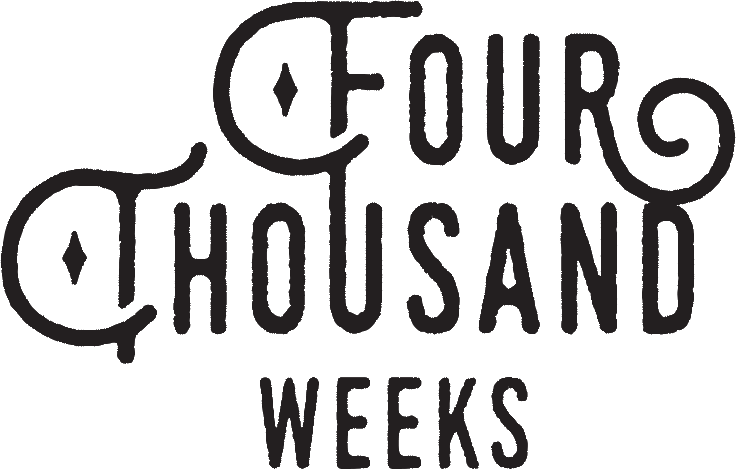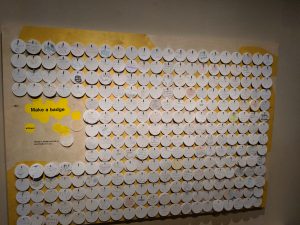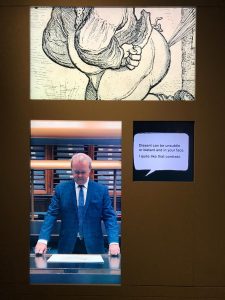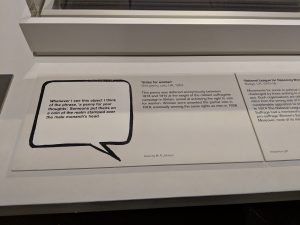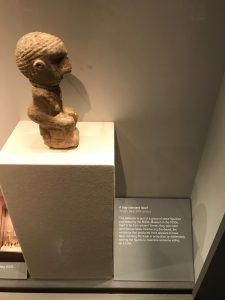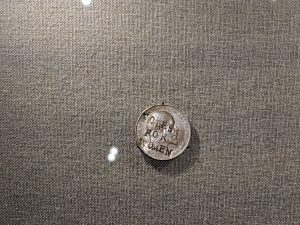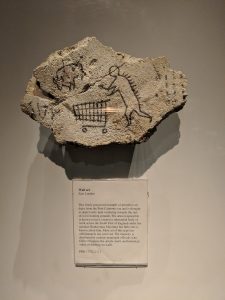If there’s one thing we love the most it’s an opportunity to visit the British Museum. If that comes in the form of an excellent exhibition about dissent, then that’s even better, especially if it is one curated by Ian Hislop.
If you haven’t already seen our guide of top 10 things to see at the British museum you can look at it here, but this article is just about how much we loved the exhibition, why you think you should go and the highlights of what’s on offer.
1. Ian Hislop’s commentary
There is a reason Hislop is as successful as he has been on TV and in broadcasting for however long it is. It is his powers of observation and awareness of what people are interested in that lead the commentary, present in speech bubbles and little silent videos throughout that really bring a sense of something else to the exhibition. Whether it’s commentary of what’s there, parallels to contemporary relevance or just comments on what he thinks about the historical narrative given, it really is insightful and a fascinating addition. On top of this, at at least 2 points throughout the exhibition, they have “protest playlists” where you can listen to snippets of songs that have been produced (or banned) in protest of authority around the world, with a little explanation to their background too. SO great!
2. Sex and toilet humour.
When is it not funny? From 18th century ‘raunchy’ pictures about big feet and failed marriages, to treasonous pictures from the 1600s depicting gentlemen farting at the king, fake sculptures on the toilet or phallic demons taking the mickey out of English colonisers, it’s just everywhere. The response to it could be the funnier part. Our favourite bits for this highlight was either the fake antiquities shaped as though they were having a poo, or the heiroglyphics scribbled on a hidden part of a tomb showing, well doggy style.
3. Mocking the British
In I Object, there are many political figures, nations, and groups of people that have been mocked through history. Not least the British. Whether that be the monarchy by the British people themselves in satirical cartoons or on defaced currency, or British Colonial agents being cleverly mocked by the Nigerian Yoruba people in exquisitely carved decorative wood panels. Hidden in these carvings is the Yoruba messenger god Areogun, playing disrespectful tricks on the colonialists, that went I noticed when these were first displayed in London in 1924. Self-deprecation is somewhat in our nature, so if you are a Brit enjoying this exhibition, it’s hard not to enjoy these pieces.
4.Sabotage
Sabotage is something often connected with political satire, the notion of disruption from the inside. Arguably one of our favourite items in the exhibition was an old wooden clog known by the old French word sabot, with a tough leather upper and hobnails in the sole(a particularly sturdy bit of footwear for the time) these were thrown into machinery by disruptive industrial workers in the 1800’s to cause a problem with production. Hence the word sabotage coming into existence(we do love a good bit of linguistic history).
5. A Banksy at the British Museum’s expense
We couldn’t not mention it really, just like they couldn’t not in the exhibition either. The exhibition encourages you to get involved through conversation starters, your chance to design badges for something that means something to you or leave a placard about breaking rules like Banksy did, and it’s really fascinating seeing what other people have written too. However the pull of the exhibition is the last thing you see, the Banksy that hit the headlines in 2005 for managing to place “Peckham Rock” and its intellectual description in the Roman gallery of the British Museum without anyone noticing supposedly, taking the mickey out of everything the British Museum stands for. Contreversial that it’s made its way back, or spot on for the exhibition, particularly with the stand against authroity that Banksy has.
It’s on until January 2019, and is £12 for adults with concession and art pass discounts available. And we implore you to visit it. But don’t take it on our authority…
